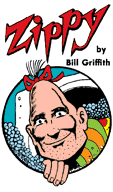
Zippy the Pinhead is a fictional character who is the protagonist of Zippy, an American comic strip created by Bill Griffith. Zippy's most famous quotation, "Are we having fun yet?", appears in Bartlett's Familiar Quotations and became a catchphrase. He almost always wears a yellow muumuu/clown suit with large red polka dots, and puffy, white clown shoes. Although in name and appearance, Zippy is a microcephalic, he is distinctive not so much for his skull shape, or for any identifiable form of brain damage, but for his enthusiasm for philosophical non sequiturs, verbal free association, and the pursuit of popular culture ephemera. His wholehearted devotion to random artifacts satirizes the excesses of consumerism.

Underground comix are small press or self-published comic books that are often socially relevant or satirical in nature. They differ from mainstream comics in depicting content forbidden to mainstream publications by the Comics Code Authority, including explicit drug use, sexuality, and violence. They were most popular in the United States in the late 1960s and 1970s, and in the United Kingdom in the 1970s.
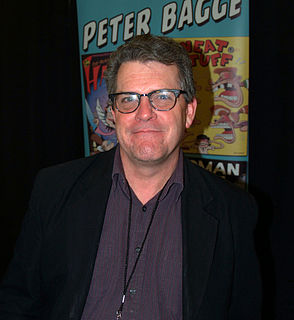
Peter Bagge is an American cartoonist whose best-known work includes the comics Hate and Neat Stuff. His stories often use black humor and exaggerated cartooning to dramatize the reduced expectations of middle-class American youth. He won two Harvey Awards in 1991, one for best cartoonist and one for his work on Hate. In recent decades Bagge has done more fact-based comics, everything from biographies to history to comics journalism. Publishers of Bagge's articles, illustrations, and comics include suck.com, MAD Magazine, toonlet, Discover, and the Weekly World News, with the comic strip Adventures of Batboy. He has expressed his libertarian views in features for Reason.
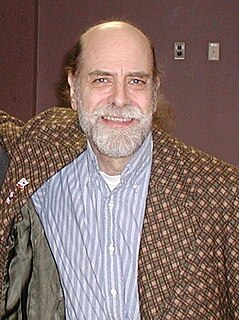
Kim Deitch is an American cartoonist who was an important figure in the underground comix movement of the 1960s, remaining active in the decades that followed with a variety of books and comics, sometimes using the pseudonym Fowlton Means.

Zap Comix is an underground comix series which was originally part of the youth counterculture of the late 1960s. While a few small-circulation self-published satirical comic books had been printed prior to this, Zap became the model for the "comix" movement that snowballed after its release. The title itself published 17 issues over a period of 46 years.
Alternative comics cover a range of American comics that have appeared since the 1980s, following the underground comix movement of the late 1960s and early 1970s. Alternative comics present an alternative to mainstream superhero comics which in the past have dominated the American comic book industry. Alternative comic books span a wide range of genres, artistic styles, and subjects.

Manuel Rodriguez, better known as Spain or Spain Rodriguez, was an American underground cartoonist who created the character Trashman. His experiences on the road with the motorcycle club, the Road Vultures M.C., provided inspiration for his work, as did his left-wing politics. Strongly influenced by 1950s EC Comics illustrator Wally Wood, Spain pushed Wood's sharp, crisp black shadows and hard-edged black outlines into a more simplified, stylized direction. His work also extended the eroticism of Wood's female characters.

Fritz the Cat is a comic strip created by Robert Crumb. Set in a "supercity" of anthropomorphic animals, the strip focused on Fritz, a feline con artist who frequently went on wild adventures that sometimes involved sexual escapades. Crumb began drawing this character in homemade comic books when he was a child. Fritz became one of his best known characters, thanks largely to the motion picture adaptation by Ralph Bakshi.

"Omaha" the Cat Dancer is an erotic comic strip and later comic book created by artist Reed Waller and writer Kate Worley. Set in fictional Mipple City, Minnesota in a universe populated by anthropomorphic funny animal characters, the strip is a soap opera focusing on Omaha, a feline exotic dancer, and her lover, Chuck, the son of a business tycoon.

Howard Cruse was an American alternative cartoonist known for the exploration of gay themes in his comics. First coming to attention in the 1970s during the underground comix movement with Barefootz, he was the founding editor of Gay Comix in 1980, created the gay-themed strip Wendel during the 1980s, and reached a more mainstream audience in 1995 when an imprint of DC Comics published his graphic novel Stuck Rubber Baby.

The East Village Other was an American underground newspaper in New York City, issued biweekly during the 1960s. It was described by The New York Times as "a New York newspaper so countercultural that it made The Village Voice look like a church circular."

William Henry Jackson Griffith is an American cartoonist who signs his work Bill Griffith and Griffy. He is best known for his surreal daily comic strip Zippy. The catchphrase "Are we having fun yet?" is credited to Griffith.

Ghost World is a graphic novel by Daniel Clowes. It was serialized in issues #11–18 of Clowes's comic book series Eightball, and was published in book form in 1997 by Fantagraphics Books. It was a commercial and critical success and developed into a cult classic.

Carol Tyler is an American painter, educator, comedian, and eleven-time Eisner Award-nominated cartoonist known for her autobiographical comics. She has received multiple honors for her work including the Cartoonist Studio Prize, the Ohio Arts Council Excellence Award, and was declared a Master Cartoonist at the 2016 Cartoon Crossroads Columbus Festival at the Billy Ireland Cartoon Library & Museum.
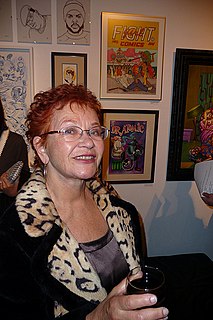
Trina Robbins is an American cartoonist. She was an early and influential participant in the underground comix movement, and one of the first few female artists in that movement. Both as a cartoonist and historian, Robbins has long been involved in creating outlets for and promoting female comics artists. In the 1980s, Robbins became the first woman to draw Wonder Woman comics. She is a member of the Will Eisner Hall of Fame.
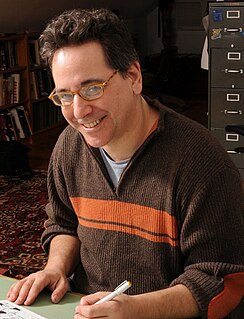
Terry LaBan is an alternative/underground cartoonist and newspaper comic strip artist. He is known for his comic book series Cud, and his syndicated strip Edge City, created with his wife, Patty LaBan, a couples and family therapist.

John F. ("Johnny") Ryan IV is an American alternative comics creator. He created Angry Youth Comix, a comic book published by Fantagraphics, and "Blecky Yuckerella", a comic strip which originated in the alternative newspaper the Portland Mercury and now appears on Ryan's website. He also created Pig Goat Banana Cricket, a TV show made jointly with Dave Cooper that Nickelodeon picked up. He is now the story editor for Looney Tunes Cartoons. In a throwback to the days of underground comix, Ryan's oeuvre is generally an attempt to be as shocking and politically incorrect as possible.

Anarchy Comics is a series of underground comic books published by Last Gasp between 1978 and 1987, as part of the underground comix subculture of the era.

Gay Comix is an underground comics series published from 1980–1998 featuring cartoons by and for gay and lesbian men and women. The comic books had the tagline “Lesbians and Gay Men Put It On Paper!”
Keith Green was an American publisher, distributor, and art dealer. Starting out in the late 1960s as an underground comix distributor, in the early 1970s he published comics, and by the mid-1970s he had become a New York City art dealer. He was the younger brother of cartoonist Justin Green.

















